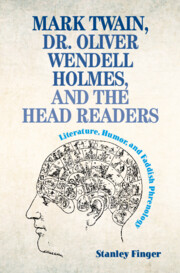Refine search
Actions for selected content:
13588 results in History of science and technology
Picturing Chinese science: wartime photographs in Joseph Needham's science diplomacy
-
- Journal:
- The British Journal for the History of Science / Volume 56 / Issue 2 / June 2023
- Published online by Cambridge University Press:
- 04 May 2023, pp. 185-203
- Print publication:
- June 2023
-
- Article
-
- You have access
- Open access
- HTML
- Export citation
How did a Lutheran astronomer get converted into a Catholic authority? The Jesuits and their reception of Tycho Brahe in Portugal
-
- Journal:
- The British Journal for the History of Science / Volume 57 / Issue 4 / December 2024
- Published online by Cambridge University Press:
- 02 May 2023, pp. 581-602
- Print publication:
- December 2024
-
- Article
- Export citation
The visual diplomacy of cancer treatments: the mediatic legacy of the Curies in the early transnational fight against cancer
-
- Journal:
- The British Journal for the History of Science / Volume 56 / Issue 2 / June 2023
- Published online by Cambridge University Press:
- 27 April 2023, pp. 167-183
- Print publication:
- June 2023
-
- Article
- Export citation
Cartoon diplomacy: visual strategies, imperial rivalries and the 1890 British Ultimatum to Portugal
-
- Journal:
- The British Journal for the History of Science / Volume 56 / Issue 2 / June 2023
- Published online by Cambridge University Press:
- 20 April 2023, pp. 147-166
- Print publication:
- June 2023
-
- Article
- Export citation

Mark Twain, Dr. Oliver Wendell Holmes, and the Head Readers
- Literature, Humor, and Faddish Phrenology
-
- Published online:
- 17 April 2023
- Print publication:
- 06 April 2023
Showcasing the international atom: the IAEA Bulletin as a visual science diplomacy instrument, 1958–1962
-
- Journal:
- The British Journal for the History of Science / Volume 56 / Issue 2 / June 2023
- Published online by Cambridge University Press:
- 11 April 2023, pp. 205-223
- Print publication:
- June 2023
-
- Article
- Export citation
11 - Holmes’s Professor on “Bumpology”
-
- Book:
- Mark Twain, Dr. Oliver Wendell Holmes, and the Head Readers
- Published online:
- 17 April 2023
- Print publication:
- 06 April 2023, pp 226-244
-
- Chapter
- Export citation
7 - More Head Readings and a Phrenological Farewell
-
- Book:
- Mark Twain, Dr. Oliver Wendell Holmes, and the Head Readers
- Published online:
- 17 April 2023
- Print publication:
- 06 April 2023, pp 146-166
-
- Chapter
- Export citation
12 - Holmes’s “Medicated Novels”
-
- Book:
- Mark Twain, Dr. Oliver Wendell Holmes, and the Head Readers
- Published online:
- 17 April 2023
- Print publication:
- 06 April 2023, pp 245-256
-
- Chapter
- Export citation
2 - Coming to America
-
- Book:
- Mark Twain, Dr. Oliver Wendell Holmes, and the Head Readers
- Published online:
- 17 April 2023
- Print publication:
- 06 April 2023, pp 27-57
-
- Chapter
- Export citation
Index
-
- Book:
- Mark Twain, Dr. Oliver Wendell Holmes, and the Head Readers
- Published online:
- 17 April 2023
- Print publication:
- 06 April 2023, pp 339-346
-
- Chapter
- Export citation
6 - Tom, Huck, and the Head Readers
-
- Book:
- Mark Twain, Dr. Oliver Wendell Holmes, and the Head Readers
- Published online:
- 17 April 2023
- Print publication:
- 06 April 2023, pp 127-145
-
- Chapter
- Export citation
1 - The Birth of a Controversial Doctrine
-
- Book:
- Mark Twain, Dr. Oliver Wendell Holmes, and the Head Readers
- Published online:
- 17 April 2023
- Print publication:
- 06 April 2023, pp 1-26
-
- Chapter
- Export citation
Preface
-
- Book:
- Mark Twain, Dr. Oliver Wendell Holmes, and the Head Readers
- Published online:
- 17 April 2023
- Print publication:
- 06 April 2023, pp xiii-xviii
-
- Chapter
- Export citation
14 - Phrenology Assessed
-
- Book:
- Mark Twain, Dr. Oliver Wendell Holmes, and the Head Readers
- Published online:
- 17 April 2023
- Print publication:
- 06 April 2023, pp 281-305
-
- Chapter
- Export citation
Epigraph
-
- Book:
- Mark Twain, Dr. Oliver Wendell Holmes, and the Head Readers
- Published online:
- 17 April 2023
- Print publication:
- 06 April 2023, pp v-vi
-
- Chapter
- Export citation
3 - Skeptical in Hannibal
-
- Book:
- Mark Twain, Dr. Oliver Wendell Holmes, and the Head Readers
- Published online:
- 17 April 2023
- Print publication:
- 06 April 2023, pp 58-74
-
- Chapter
- Export citation
9 - An American in Paris
-
- Book:
- Mark Twain, Dr. Oliver Wendell Holmes, and the Head Readers
- Published online:
- 17 April 2023
- Print publication:
- 06 April 2023, pp 185-207
-
- Chapter
- Export citation
8 - Young Holmes and Phrenology in Boston
-
- Book:
- Mark Twain, Dr. Oliver Wendell Holmes, and the Head Readers
- Published online:
- 17 April 2023
- Print publication:
- 06 April 2023, pp 167-184
-
- Chapter
- Export citation
Epilogue
-
- Book:
- Mark Twain, Dr. Oliver Wendell Holmes, and the Head Readers
- Published online:
- 17 April 2023
- Print publication:
- 06 April 2023, pp 306-317
-
- Chapter
- Export citation
